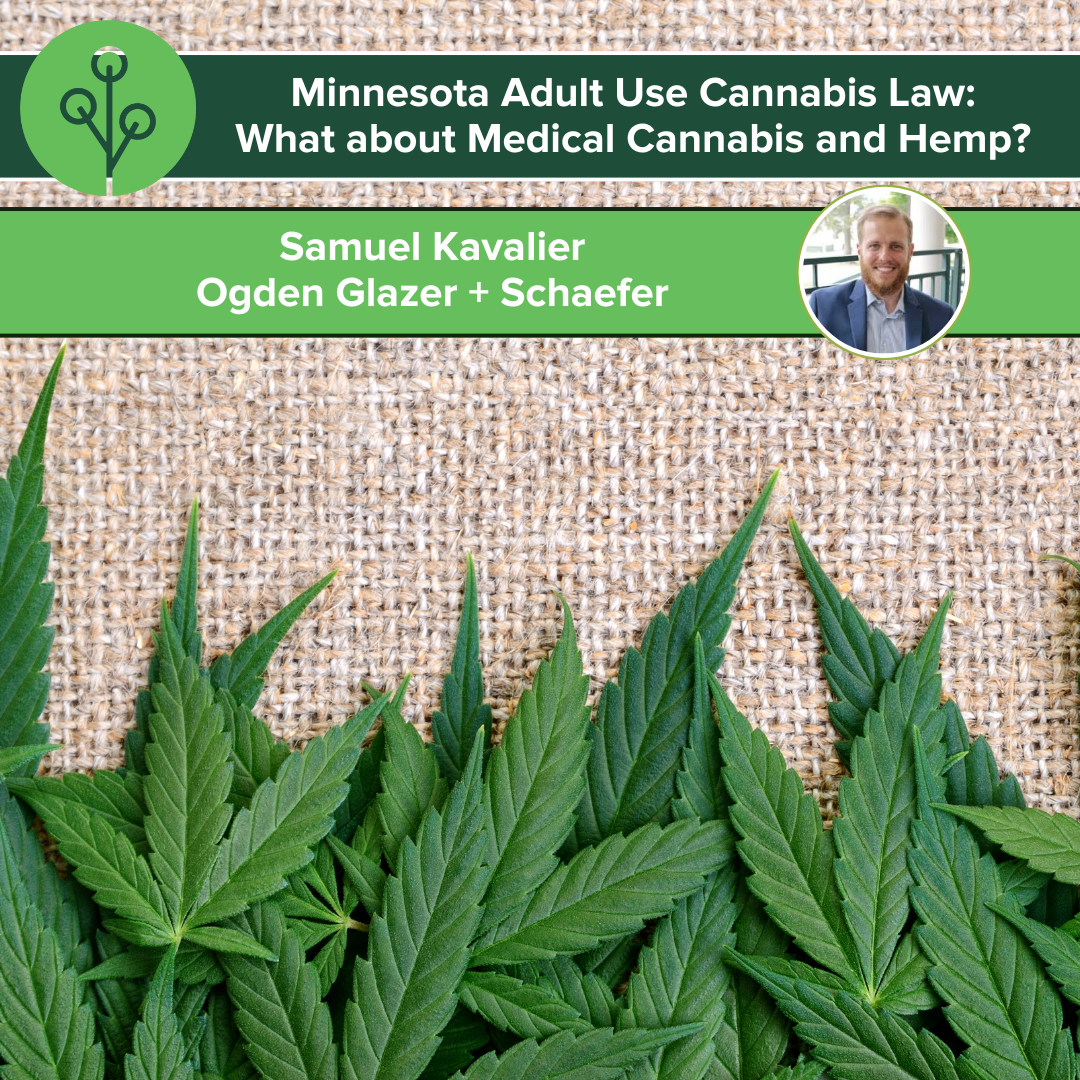This post is the third part in a multi-part series on Minnesota’s Adult Use Cannabis Law. Feel free to check out Part 1 and Part 2. The last post talked about adult use cannabis businesses and what various licenses will be available. This next post will focus on adjacent products and industries impacted by the adult use cannabis law: medical cannabis and hemp.
Let’s start with medical cannabis. Medical cannabis has been legal in Minnesota since 2014. In short, if a Minnesota resident has a qualifying medical condition, and that condition is certified by a participating health care practitioner, that resident is eligible to register on the Minnesota medical cannabis registry. After enrollment, the patient is eligible to visit licensed medical cannabis dispensaries (supplied by licensed medical cannabis cultivators and processors) to fill their prescriptions for medical cannabis.
Minnesota’s Adult Use Cannabis Law impacts medical cannabis in a few ways. First, the law creates new licenses for the cultivation, processing, and sale of medical cannabis. In fact, the law creates a license type for “medical cannabis combination business,” which enables the license holder to cultivate, process, and sell medical cannabis. Second, the law allows for some licensure crossover between medical cannabis and adult use cannabis. For example, both medical cannabis cultivators and processors may also hold cannabis cultivator, manufacturer, and event organizer licenses for adult use cannabis. Third, the law establishes legal protections for medical cannabis patients. The law prevents Minnesota employers from discriminating against an employee registered as a medical cannabis patient solely on the grounds of being a medical cannabis patient or a positive drug test for cannabis, assuming the employee does not use or possess medical cannabis on company time or company property.
Now we can shift to hemp. “Hemp” is considered (my paraphrase of both federal and state law) cannabis plants (and parts/products derived from them) containing a THC concentration of no more than 0.3% on a dry-weight basis. Minnesota’s Adult Use Cannabis Law essentially divides hemp into 3 buckets: industrial hemp, edible hemp products, and hemp-derived topical products and fiber products. For industrial hemp, this is hemp produced and used for industrial/manufacturing purposes. Industrial hemp has been legalized in Minnesota since 2015. Minnesota’s Adult Use Cannabis Law specifies throughout that it generally does not impact industrial use cannabis.
Edible hemp products come in a few different varieties (such as edible cannabinoid products, hemp-derived consumer products, and lower-potency hemp edibles). The initial wave of these products (edible cannabinoid products) became available through separate legislation in 2022 (see H.F. 4065). The Adult Use Cannabis Law introduced hemp-derived consumer products and lower-potency hemp edibles, including licenses for their manufacture and sale. The adult cannabis law further shifts regulation of all edible hemp products from the Minnesota Board of Pharmacy to Minnesota Office of Cannabis Management [OCM]. Finally, hemp-derived topical products essentially cover the hemp-derived products that are intended for human consumption, but are applied externally on the body (rather than ingested, smoked, etc.). The adult use cannabis law specifies that no license is required for the manufacture, distribution, or sale of hemp-derived topical products, but sets the requirements for what ingredients can be used, labeling requirements, and the like.
Thank you for reading! Tune in next week for the next installment in the multi-part series.

